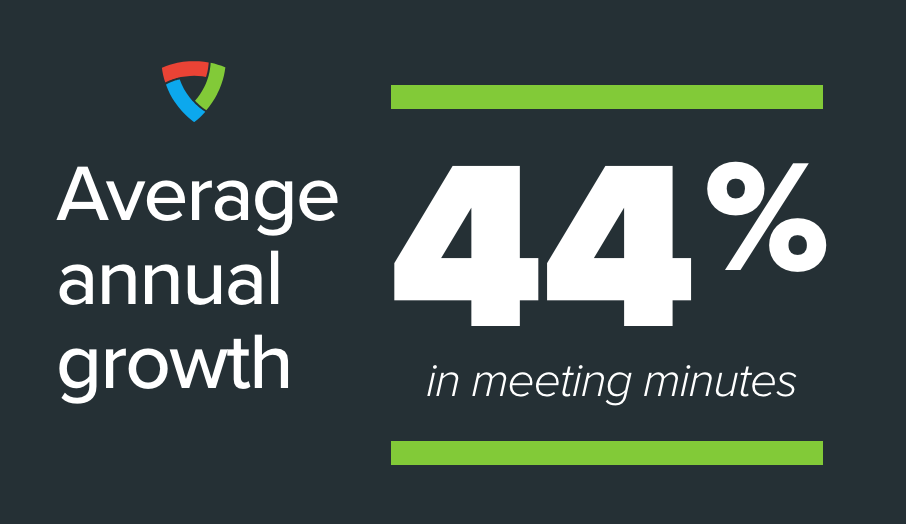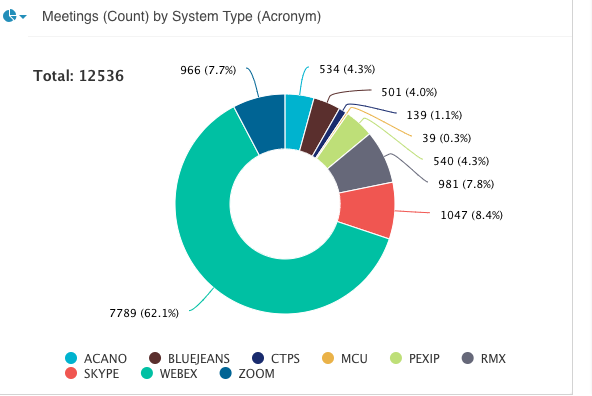Prior to the coronavirus outbreak, approximately 90% of our workforce was working remotely either completely or a few days a week.
We embraced the concept of remote work initially to support the ability to hire great talent regardless of location. We have since expanded to provide our team greater freedom to work in ways that increase their efficiency and effectiveness (both individually and as a team), while providing better work-life balance (especially for those employees where commuting was difficult). Remote working has evolved to be part of our culture and business model with the pervasive availability of high-speed broadband Internet, cloud-based applications — including unified communications & collaboration applications (chat, voice, video, content sharing) — and more powerful devices (laptops, tablets, smartphones).
With the social distancing and lockdown measures enacted by the government, Vyopta has easily moved to be 100% remote work with no impact to our business operation.
Building an HR Toolkit for Remote Work
The HR remote toolkit should consist of a portal that provides access to the following:
- List of available tools that employees can access to perform their functions (e.g., technology devices, communication applications and tools, IT applications)
- Secure access to the organization’s network and other resources based upon the individual employee’s role and business function
- Self-service resources and assistance that includes:
- Remote work policy
- How to balance personal and work activities
- Guidance for managers and team leads
- Guide to getting started with remote work from home
- Resources for how to use the tools for remote work (tailored for each business team)
- Professional development and training resources related to the job
- Remote work policy
- Virtual company activities
- Provide frequent updates of critical information, both company wide and departmental
- Provide professional development services
- Provide opportunities for virtual interaction among remote workers to strengthen the team culture and employee engagement within and across teams
- IT services
- Provide technical support to ensure continuity and smooth transition from workplace to home environment
- Includes preparation and planning
- Remote assistance for set up if necessary
- Provide technical support to ensure high availability of systems to maximize productivity and minimize downtime
- Support Product Management, Development and Development/Cloud Operations
- Support Sales teams and Sales activities
- Support Customer Services organization
- Support compliance measures to ensure the security and privacy requirements
- Support requests for tools (e.g., technology devices, communication applications and tools, IT applications) and access to company resources
- Provide technical support to ensure continuity and smooth transition from workplace to home environment
- HR services
- Serve as a the central communications point to field employee concerns and questions
- Provide traditional employee support services (benefits, insurance, disability, etc)
- Assist with employee engagement and interaction, work to ensure good morale across the organization
HR’s Role in Facilitating Remote Work Learning
HR should work with leadership to:
- Create and establish a policy and process that clearly establishes the work from home guidelines
- Enable remote workers and teams to perform their jobs and empower them to exceed their goals
- Make available professional development that helps increase and enhance employee capabilities, especially in a remote work from home environment
- Continually deliver traditional employee support services
How HR and IT Can Collaborate to Make Sure Technology Works
The key here is communication – HR must partner with IT to develop a process for each new hire. The process should clearly define the role of the individual, which in turn results in a template of the technologies needed by that individual to fulfill his or her job requirements. This would include the hardware and other tools needed, the software/applications packages for the role and the backend process, policies and approvals required to provision accounts and other permissions. Additionally, IT needs to employ management tools (such as device management systems) to ensure that the tools used by remote workers are up to date and operational 24×7 and to track service levels/incidents of cloud applications.
Creating An Agile HR Response
This requires flexibility and speed on the part of HR to learn and provide insight to the management team so that the organization can make decisions quickly. While you do not want to change the policies daily (people like consistency), you do want the ability to make changes as necessary. It is very important that as our business landscape changes (government regulations, customer demands, competitive pressures, crisis situations – like the coronavirus outbreak), the HR team needs to clearly communicate the remote work policies to ensure understanding.
Just as it is important that the HR team communicates to the workforce, it is also a critical policy that remote workers communicate effectively both internally and externally. This means that every remote worker should routinely check voicemails, forward office based phone calls to cell phones, hold meetings using video conferencing, use persistent chat messaging (including indication of status) for real time communication and collaboration, collaborate on documents using screen sharing or hosted document share, and VPN — if needed — to access secure company resources on the wide area network. HR should also suggest best practices for setting up the home workspace, eliminating distractions, ensuring privacy and confidentiality, appropriate attire and backgrounds for video conferencing, and how to stay connected to the organization.
It is important to get up to speed on ever-changing employment laws. If the HR team is large enough, the Benefits Compliance team would help the company keep abreast of the fast-changing legislative and regulatory developments. Having an employment attorney is crucial as some of these laws need more interpretation and most firms provide immediate notification of any changes to employment law.
Ramping Up Communication to Meet Employee Needs
The root of the solution is based on solid communication policies. While HR serves as the lynchpin to provide information to the employees, the HR team also is critical to receive concerns and questions from the workforce. HR can help manage and assist with concerns that employees may bring. We find that using modern unified communications and collaboration applications to be critical for establishing high availability for employees to reach out. Additionally, using video conferencing helps to provide a more human interaction where remote work may feel isolating. We suggest that HR (and management teams) create a cadence of short meetings to reach out and check on remote workers just to touch base, get feedback and potentially unearth any concerns.
Also, depending on the size of your HR department you should consider building a remote work task force to start dealing with the influx of potential issues that will arise given all the complexities. This is also a good time to revisit your core values and make sure they are aligned or possibly use this as an opportunity to revise. Maintaining a positive attitude toward remote working and showing a willingness to trust employees will be key to ensuring they are successful and productive. Focus on measuring results and reaching shared or personal objectives.
HR and the leadership team need to work together and be available to provide emotional support and to help reduce team stress. This type of communication is valuable. If available, an employee assistance program (EAP) is also a good resource for the team.
How HR Can Help Keep Employees Productive
HR may not be the managers of the employees, but HR can be the “X” factor to help strengthen the culture and employee engagement and satisfaction, while monitoring the pulse of employee morale.
As part of our response to the COVID-19 pandemic, Vyopta is currently offering a free trial to help IT teams support massive expansion in remote work.

Alfredo Ramirez is a seasoned entrepreneur with direct experience in building early-stage software technology companies, which is why he proudly serves Vyopta as CEO and Co-Founder. A nod to his passion for pushing the button of innovation, Alfredo previously co-founded Vitalz (a venture backed enterprise software company acquired by Oracle) and Daman Consulting. He holds a B.S. in Electrical and Computer Engineering from The University of Texas at Austin and writes about topics such as technology, employee engagement, and innovation from the CEO perspective.







